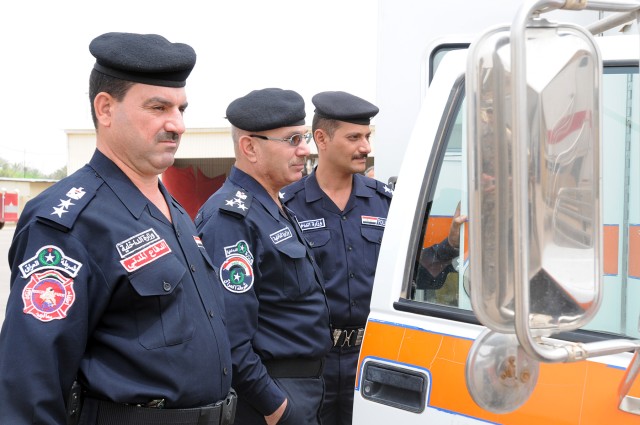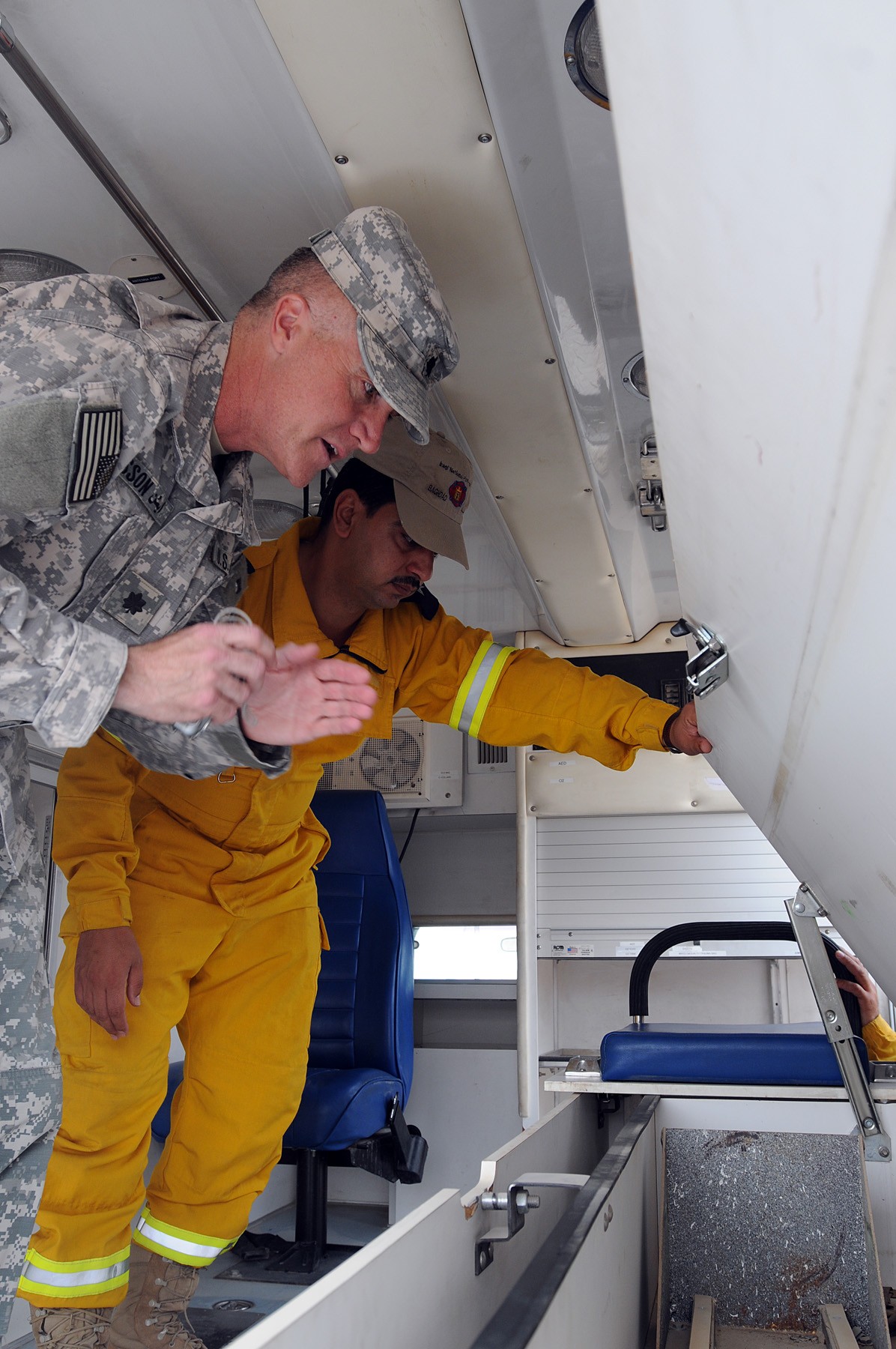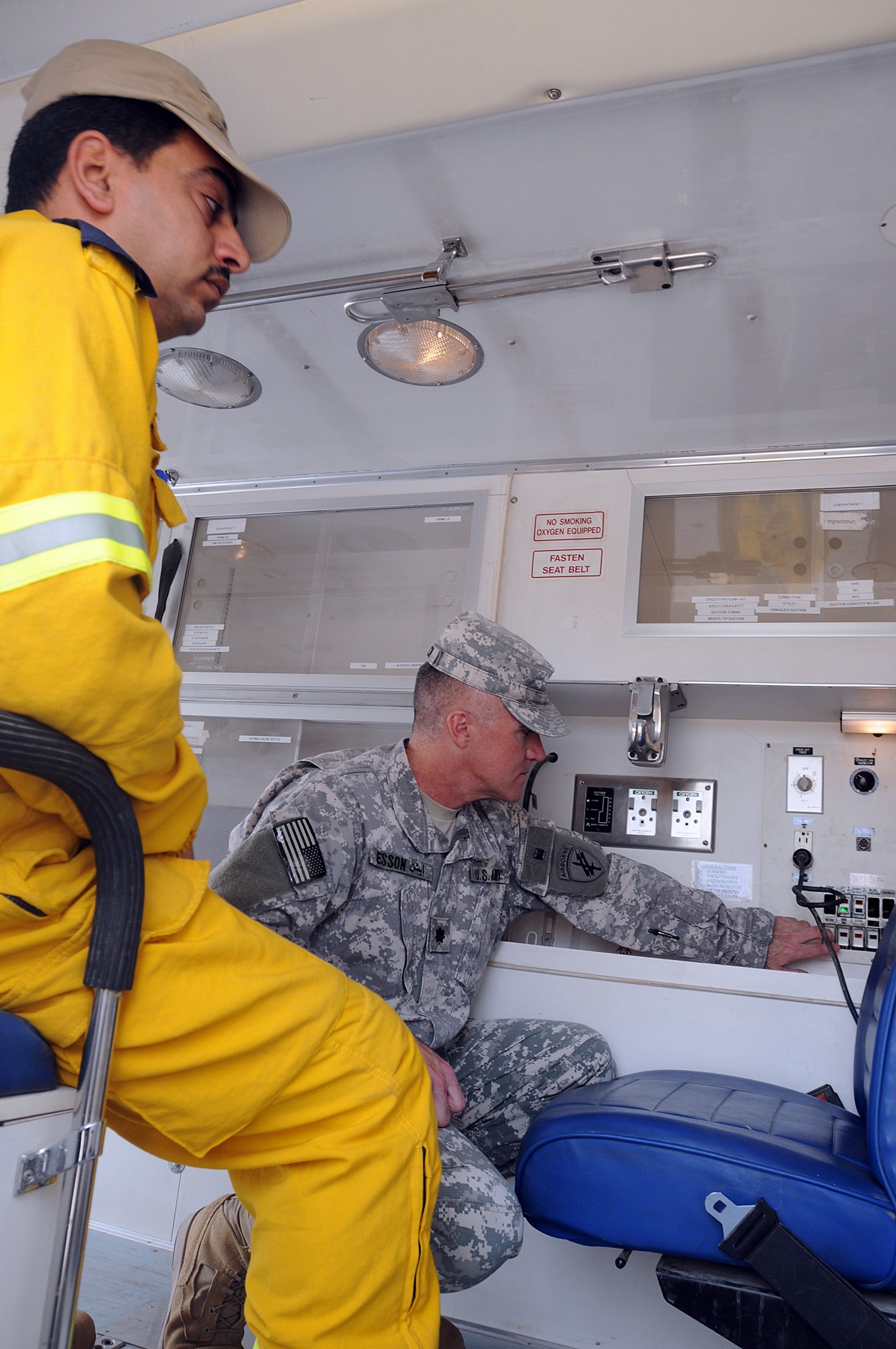BAGHDAD - Soldiers delivered a refurbished ambulance to the Iraq Civil Defense Directorate firefighters in the International Zone on April 22.
The ambulance is the first in the IZ and will be used as a training aid for the Civil Defense Directorate until additional repairs are completed on the vehicle that will make it fully mission capable, said Maj. Arnel David, a Federal Police Transition Team chief in the IZ, assigned to the 1st Advise and Assist Brigade, 3rd Infantry Division.
"One of our missions is to have an ambulance at every one of [ICDD] fire stations," said Lt. Col. Gary Esson, the fire and emergency medical advisor for the directorate assigned to 414th Civil Affairs Battalion, 1st Armored Division.
Esson said that in the past, if the IZ fire department needed an ambulance, it could take up 25 minutes for one to arrive from a different area.
Although the IZ will benefit from the ambulance, the ambulance isn't fully equipped yet and will best serve as a training aid for the civil defense directorate, said
Training with the ambulance will include loading and unloading patients, working on patients inside a confined space, and performing tasks such as starting intravenous fluids or controlling bleeding while in a moving vehicle. Esson added that before the arrival of the new vehicle, firefighters were limited to treating patients that were lying on the sidewalk.
"This ambulance is very good for us in enriching the training procedures of this academy," said Brig. Gen. Jaafer Gatoof, the deputy officer for the directorate.
The ambulance hand off that will enrich training at the Iraqi fire academy was only made possible through strong communication and ties with Iraqi counterparts and good communication within different branches of the U.S. military.
U.S. Airmen from Camp Sather Air Base did a cost-benefit analysis. They determined it would cost more to ship the ambulance back to the states for repair than to repair the vehicle in Iraq and transfer it to the Iraqis, said David.
David's team was notified and the search began for an organization in need of an ambulance.
Soldiers recalled various news articles and clippings from a demonstration at the Iraq Civil Defense Directorate's fire academy, and David contacted Esson to see if his Iraqi counterparts might have use for an ambulance, Esson said.
The Zurk Group, an Iraqi contracting company, then volunteered to refurbish the ambulance, and it was turned over to the fire academy two weeks later, said David.
"We've been working with the Americans and have received a lot of specialized vehicles, but this is the first ambulance given to this academy," said Gatoof.
Turning used equipment over to Iraqi organizations is nothing new for David's team, which seeks to improve Iraq's capabilities in any way possible.
"If we continue to increase the essential services in Iraq, [it] allows for a smoother transition as U.S. forces step into an advisory role," said Esson. "These essential services increase the quality of life."
Once the repairs are complete, David and Esson hope to see Iraqis using it on the road, benefitting Iraqi's by saving lives.








Social Sharing